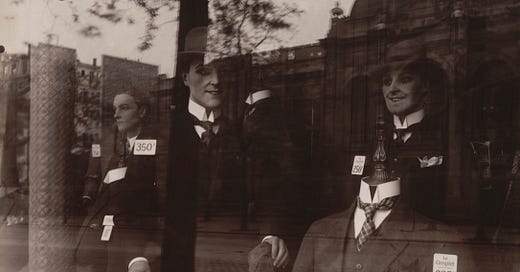Through the Looking Glass
Which explores how Kafka's early 'Contemplation' collection oscillates between detached observation and a yearning for connection, creating a unique narrative style that would define his later works.
In late 1912, just before the seismic creative breakthrough that would produce ‘The Judgment’ and launch his mature period, Franz Kafka published a slim volume titled Betrachtung (aka Meditation or Contemplation, PDF, pp. 404-433).1 The collection gathered eighteen short pieces, most barely longer than a page, written between 1904 and 1912. At first glance, they might seem like mere sketches—fragments really, trial runs on the path to his later works. But these compact texts, hovering somewhere between prose poems and parables, already contain the seeds of Kafka’s singular literary voice.
As we’ve seen previously, the stories in Contemplation emerged during a period of intense artistic searching: Kafka was unsure of his footing, even though he’d already produced a few unpublished texts, like the sprawling, fragmented ‘Description of a Struggle’ and ‘Wedding Preparations in the Country.’ But what makes these early pieces fascinating is how they capture Kafka’s distinctive narrative theme…
Keep reading with a 7-day free trial
Subscribe to Paper Knife to keep reading this post and get 7 days of free access to the full post archives.




